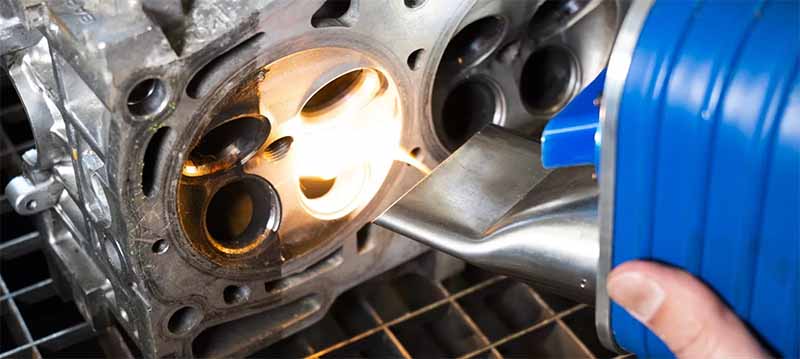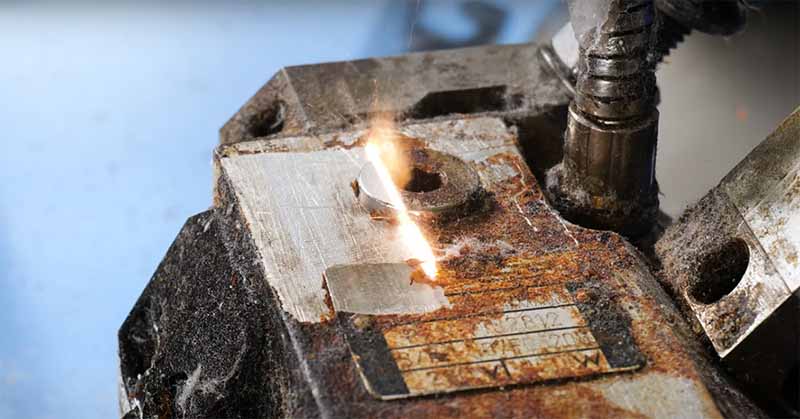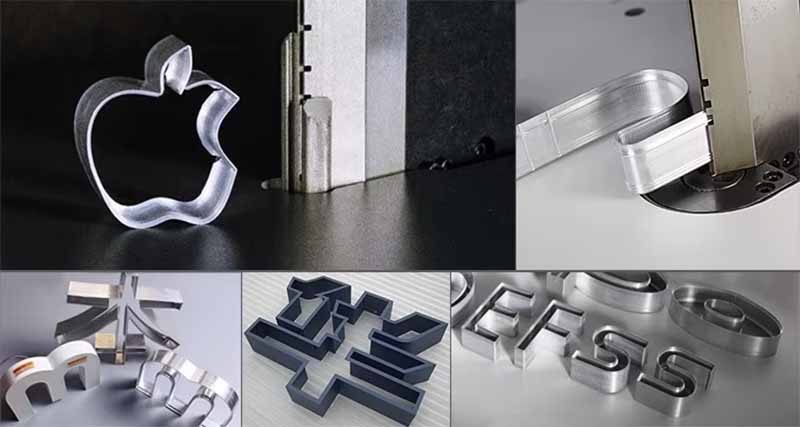Picosecond laser marking technology has become one of the leading solutions in modern industrial applications, thanks to its ultra-short wavelength, ultra-narrow pulse width, high peak power, fast processing speed, and strong material absorption. Among its many uses, the laser marking machine for plastic stands out for its ability to create high-contrast, high-resolution marks without causing thermal damage. It is widely applied to a variety of plastic materials, including PVC, PC, ABS, PP, PE, and PS, offering precise and reliable marking results for even the most delicate surfaces.

Benefits of Picosecond Laser Marking
Laser marking is an advanced, non-contact processing technology that uses high-energy laser beams to create permanent marks on a wide range of materials. It offers exceptional design flexibility, allowing for precise and clear markings on complex or irregular surfaces without the need for molds. The process introduces no mechanical stress or thermal deformation to the workpiece, and produces marks with high contrast, excellent wear resistance, and corrosion resistance.
UV picosecond lasers feature outstanding beam quality, high repetition rates, narrow pulse widths, and high peak power, enabling high-speed and high-precision marking on materials such as plastics, glass, films, and semiconductors. The ultra-short pulses release energy in an extremely brief time frame, minimizing thermal effects and preventing issues like melting, carbonization, or deformation—achieving true “cold processing.”
This minimal thermal impact makes picosecond laser marking machine particularly suitable for processing heat-sensitive or fragile materials, especially for fine marking on thin plastic films. In addition to static applications, they are ideal for dynamic, high-speed marking processes such as on-the-fly marking in production lines. With precision down to the micron or even nanometer level, picosecond laser technology provides a reliable and efficient solution for high-precision micro-marking and engraving in advanced manufacturing industries.

alt: picosecond laser engraving plastic
Why Choose Picosecond Laser Engraving Plastic?
When marking plastics with traditional laser markers such as CO₂ or UV laser marking machines, the intense thermal effects can often cause surface melting, charring, yellowing, or deformation. These issues compromise the accuracy, appearance, and durability of the marks.
Advantages of UV Picosecond Laser Marking Machines
- Cold Processing – No Thermal Damage
Ultraviolet picosecond lasers operate at short wavelengths (typically 355 nm) and emit ultrashort pulses in the picosecond range. This enables a true “cold processing” effect, where the laser energy induces photochemical reactions directly on the plastic surface instead of thermal reactions. As a result, there is virtually no heat-affected zone (HAZ), effectively preventing melting, burning, yellowing, or surface deformation.
- Ultra-High Precision for Fine Marking
With extremely short pulse durations, picosecond lasers release energy within a very confined area, minimizing energy diffusion and allowing for more focused, controlled marking. This makes it possible to produce ultra-fine features with character sizes down to the millimeter or even micrometer scale—ideal for high-precision applications such as marking miniature electronic components or finely graduated medical instruments.
- High Compatibility with Various Plastics
Ultraviolet picosecond lasers are highly adaptable and compatible with a wide range of plastic materials, including ABS, PE, PET, PC, and more. Even transparent or laser-resistant plastics can be marked with high contrast and no surface damage, offering exceptional versatility across different plastic types.
- Fast, Efficient, and Environmentally Friendly
UV picosecond laser systems offer high-speed marking with excellent clarity and anti-counterfeiting features. They operate without the need for consumables, reducing maintenance and operating costs. This makes them an eco-friendly and cost-effective choice for modern plastic marking needs.
- High Contrast and Multi-Color Effects
Picosecond laser technology enables high-contrast marking on plastics, extending beyond simple black or white marks. It can produce a range of color effects and allows for precise control over tonal depth, meeting both aesthetic and functional design requirements. These capabilities make picosecond laser markers highly favored in the plastics industry.
Application of Picosecond Laser Marking on Plastic
Picosecond laser marking systems are widely used in the processing of thin materials, ceramic drilling, and glass ink removal, coating removal, colored marking on anodized aluminum, plastic marking, and micro-marking, as well as precision cutting, drilling, and marking of film materials.
UV Picosecond Laser Marking in Plastic Housings for Electronics
In modern consumer electronics, UV picosecond laser marking has become a preferred solution for plastic enclosures due to its high precision, efficiency, and non-contact cold processing capabilities. This technology is now extensively used to mark plastic housings for products such as smartphones, headphones, chargers, and smart home devices.
UV picosecond lasers can deliver clear, permanent, high-quality marks in a matter of seconds, perfectly meeting the stringent aesthetic and functional demands of high-end electronics.
UV laser marking enables accurate engraving of brand logos, product models, functional icons, or voice control symbols on plastic surfaces—enhancing both aesthetics and usability. For instance, the housings of smart speakers and smart cameras are often laser-marked with interface labels, specifications, and usage instructions, making them easier to identify and operate.

High Efficiency and Unmatched Detail
Thanks to ultrashort pulses and high energy density, picosecond lasers achieve high-contrast, heat-free marking even in very small areas. This ensures exceptional efficiency and precision, making the technology especially well-suited for detail-intensive components in electronic devices.
Durable and Reliable — Supporting Brand Identity and Traceability
Laser markings are permanent, corrosion-resistant, and fade-proof. They don’t peel or wear off over time. For example, some smartphone manufacturers use picosecond lasers to create gradient effects or intricate textures on plastic surfaces—enhancing the visual appeal while ensuring the durability and legibility of the marks throughout the product’s lifecycle.
UV Picosecond Laser Marking Electronic Components and Sensors
UV picosecond lasers are particularly well-suited for high-precision, non-carbonized marking on common materials used in electronic components, such as PI (polyimide), PET, glass, ceramics, and silicon wafers. As a result, they are widely adopted in the precision electronics manufacturing industry.
QR codes, production codes, and traceability codes on circuit boards (FPC/PCB)
Markings and alignment points on chip packaging and wafers
Model numbers, specifications, and company logos on MEMS devices and sensor housings
High-precision marking on miniature components such as camera modules, connectors, and LED substrates
Features:
- High Contrast & Resolution: Enables detailed, high-resolution markings ideal for tracking and managing miniature electronic devices
- No Thermal Damage: The cold-processing nature of picosecond lasers protects sensitive electronic structures
- Non-Contact Processing: Eliminates mechanical stress, reducing the risk of damage to delicate components
- Automation-Ready: Easily integrated into automated production lines, enhancing efficiency and consistency across high-volume manufacturing

Medical UDI Marking with Picosecond Laser System
The ultrashort pulse width of ultrafast lasers produces an extremely small heat-affected zone (HAZ), allowing manufacturers to create cleaner micro-holes and incisions in medical components. UV lasers are particularly well-suited for marking medical-grade plastics such as polycarbonate (PC), polypropylene (PP), polyethylene (PE), and ABS, making them ideal for UDI (Unique Device Identification) compliance.
Graduations and batch numbers on syringes, IV sets, and blood collection tubes
Model numbers, logos, and anti-counterfeiting codes on disposable surgical instruments
Housing markings on medical sensors and monitoring equipment
Features:
- Clear and Permanent Markings: Resistant to sterilization and corrosion
- Ink-Free and Label-Free: Eliminates chemical contamination risks and meets stringent hygiene standards
- Micron-Level Precision: Enables ultra-fine marking on small surfaces, ideal for intricate medical components

UV Picosecond Laser Marking for Food and Consumer Goods Packaging
UV picosecond laser marking has become a preferred alternative to traditional inkjet printing and labeling in the consumer plastic packaging industry. Thanks to its high speed, excellent contrast, and visually appealing results, it is widely used on plastic packaging for cosmetics, food products, and household items.
Brand logos on cosmetic bottles and caps
Production dates, batch numbers, and traceability codes on plastic bottles and caps for food and health supplements
Features:
- Consumable-Free and Eco-Friendly: No need for ink or labels, supporting sustainable and cost-effective high-volume automation
- Permanent and Fade-Resistant Marks: Enhances product quality and brand recognition
- Precision Marking on Complex Surfaces: Adapts to various plastic shapes and structures
- Robust Anti-Counterfeiting Capabilities: Supports QR codes, micro-text, and intricate security patterns

Picosecond Laser Marking Machine
The uv picosecond laser marking machine is engineered for applications requiring ultra-high precision laser marking. Utilizing advanced ultraviolet picosecond laser technology, it is particularly suited for processing transparent, reflective, brittle, and ultra-thin materials. It delivers ultra-fine, high-resolution marking results while its cold processing mechanism significantly minimizes the heat-affected zone—ensuring no material deformation or edge burning. This makes it ideal for scenarios where surface quality is critical.

Key Applications:
- Glass Marking & Cutting: Enables high-quality, high-efficiency non-contact precision machining
- QR Code Marking: Produces sharp, high-density codes in small areas to enhance traceability
- PCB Marking: Non-destructive marking that meets the electronics industry’s strict precision and cleanliness standards
- Stainless Steel Surgical Scissors Marking: UDI-compliant QR code engraving for medical instruments—clear, wear-resistant, and traceable
- Disposable Plastic Endotracheal Tubes: Microstructure marking on plastic surfaces without heat deformation or performance degradation
An ideal solution for high-end material processing, widely used in electronics, medical devices, and precision manufacturing industries.
Contact us today for a free sample marking service and see the results for yourself! In a word, the picosecond laser marking machine stands out as a cutting-edge solution for manufacturers seeking ultra-precise, high-contrast, and damage-free marking across a wide range of materials. From delicate medical plastics to reflective metals and microelectronic components, its cold processing capability ensures clean, permanent results without compromising material integrity. Ready to upgrade you’re marking process? Contact us for a free sample test and discover how picosecond laser technology can transform your production line.



